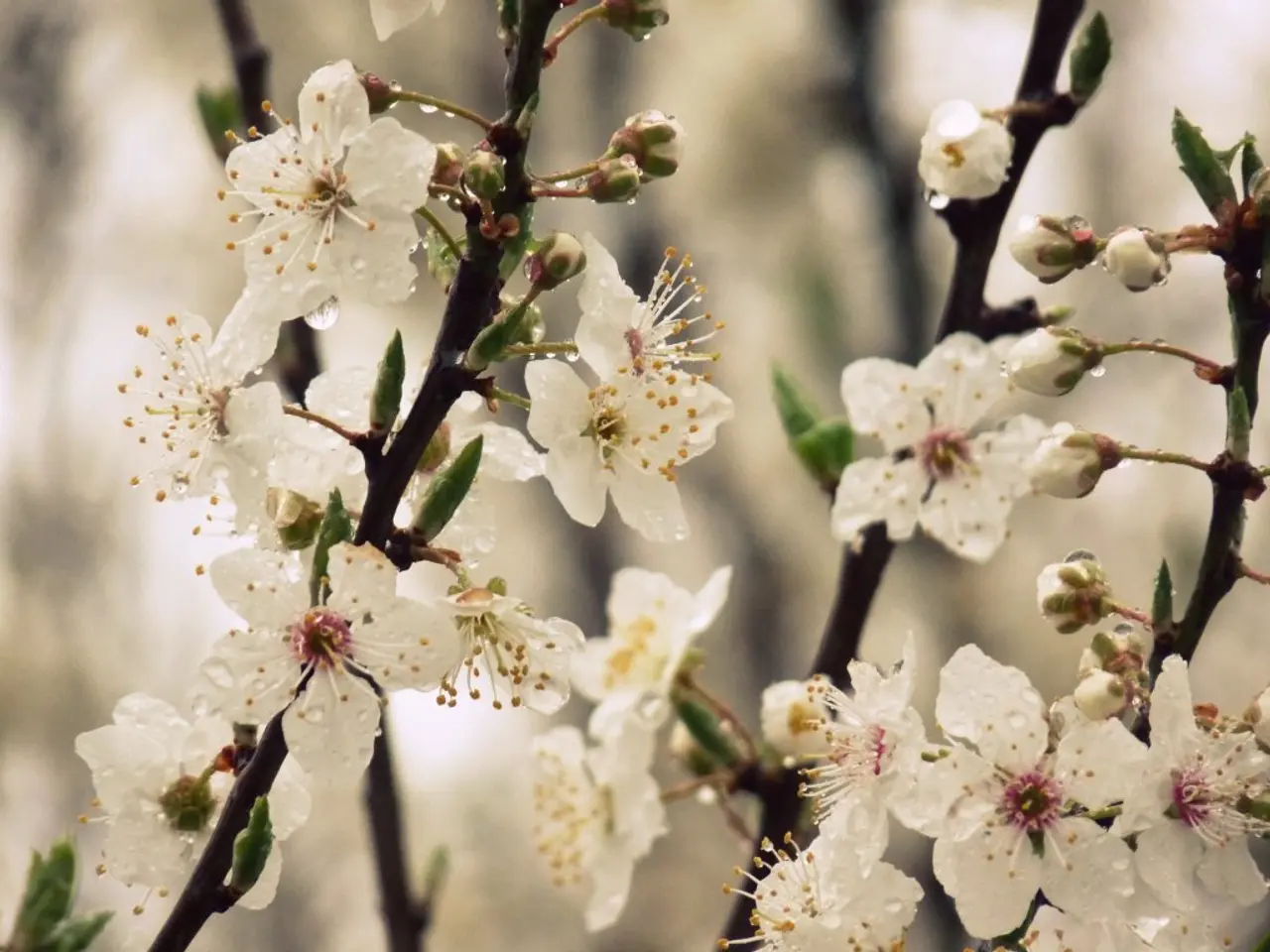Concerned About Unwanted Plants? Explore 8 Common Species of Weeds - Along with Effective Methods to Eradicate Them
In the world of gardening, one challenge that many gardeners face is the growth of unwanted plants, commonly known as weeds. These pesky invasive species can quickly take over a garden if left unchecked. However, with a combination of mechanical, organic, and chemical approaches tailored to specific weed types, it is possible to maintain a weed-free garden.
Mechanical Control
Hand pulling and hoeing are highly effective methods for controlling weeds, especially when the entire root system is removed. For deep-rooted perennials like Canada Thistle and Bindweed, digging out whole plants is crucial to prevent regrowth. Hoeing works well on smaller, surface-level weeds.
Mulching and Weed Barriers
Mulching and the use of thick weed barrier fabrics or plastic can prevent the establishment of weeds. Applying several inches of mulch shades emerging weeds and prevents seed germination, while thick weed barriers are effective against persistent weeds like Purslane.
Boiling Water
Pouring boiling water directly onto weeds can kill them in small areas, especially for weeds growing in cracks or limited spaces. However, this method might not kill roots and is unsuitable for lawns or large areas.
Herbicides
For grassy weeds like Crabgrass and Lawn Burweed, pre-emergent herbicides applied before germination and selective post-emergent herbicides during growth phases are effective. Perennial broadleaf weeds such as Canada Thistle, Bindweed, and Pokeweed respond best to systemic herbicides that translocate to roots. Pre-emergent herbicides can help prevent annual weeds like Purslane and Yellow Salsify.
Cultural Practices
Maintaining a dense, healthy lawn with regular mowing, proper fertilization, and irrigation reduces bare ground where weeds can establish, limiting infestations like Crabgrass and Burweed.
Additional Tips
For stubborn perennial weeds, repeated control efforts over multiple growing seasons are often necessary. Flame weeding or digging out Purslane reduces its spread but combining with mulch or barriers improves control.
In summary, controlling these common weeds requires integrated management: mechanical removal (hand pulling, digging), mulching, targeted herbicide use depending on weed type, and good lawn/garden cultural practices to discourage weed establishment.
Careful Mulching
Careless mistakes with mulching can allow yellow salsify to establish. To prevent this, a 2-3in layer of Scotts Nature Scapes Mulch from Lowes can help prevent prostrate spurge taking hold.
Controlling Crabgrass
Crabgrass can be controlled by maintaining a healthy lawn with a regular mowing routine or a weed eater, reseeding any bare spots in the turf, and applying a mulch along with consistent light irrigation.
Dealing with Pokeweed
Pokeweed has been established all over the United States. Before it has established, it can be dug out or spot-treated with herbicide. A deep layer of mulch can prevent the establishment of pokeweed. Gathering and destroying any berries left behind after the plants are removed can help prevent pokeweed from coming back.
Tackling Bindweed
Bindweed is a resilient perennial weed with arrow-shaped leaves and a vining habit that can grow to 6ft. It blooms with white to light pink blossoms and is difficult to control due to its resilience. The use of non-selective chemical herbicides to kill root systems is the only way to eradicate bindweed. A heavy and regular application of mulch can help prevent the establishment of bindweed.
Managing Prostrate Spurge
Prostrate spurge is a low-growing broadleaf annual weed that forms dense mats of purple to green foliage. Hand-pulling weeds when they are immature or spot-treating with herbicide can help control prostrate spurge. Mulching can prevent the establishment of prostrate spurge.
Controlling Canada Thistle
Canada Thistle is difficult to control through manual digging, and an herbicide might be needed to eradicate it. A two-part approach - a fall and early spring application of herbicides combined with pre-bloom mowing through the growing season - may be effective. Canada Thistle is a noxious weed in 43 states, spreading through rhizomes or wind-blown seeds. It emerges in mid to late spring, matures to a height of 2-4ft, and blooms in July to August.
Tackling Common Purslane
Common Purslane is a major weed found in over 50 crops and lawns, with succulent-like leaves and tiny yellow blooms. It has a long lifespan, with seeds remaining viable for 20-40 years. Common Purslane can be controlled using pre-emergent or selective herbicides according to the manufacturer's instructions.
Sources:
- Garden Myths: Boiling Water Kills Weeds
- Controlling Common Weeds in the Home Garden
- Integrated Weed Management
- Crabgrass Control
- Prostrate Spurge
- Canada Thistle
- Purslane
- Pokeweed
- Bindweed
About the Author
Amy Grant has been gardening for 30 years and writing for 15, with a focus on culinary gardening.
Lifestyle ImprovementMaintaining a healthy and well-kept home-and-garden can contribute positively to one's lifestyle. This is especially true in the gardening aspect, where controlling weeds and nurturing desired plants can lead to a more enjoyable outdoor environment.
Gardening TechniquesBy employing an integrated approach to managing common weeds, gardeners can effectively control various species like Crabgrass, Common Purslane, and Bindweed. This approach includes mechanical removal, targeted herbicide use, and good cultural practices to discourage weed establishment.




